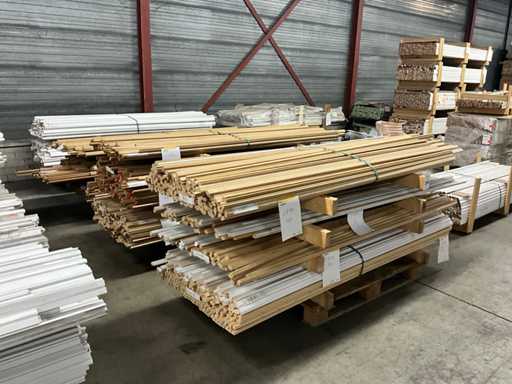Wood-Based Materials
Chipboard, plywood boards, solid wood & more
Wood is not just wood
In addition to the differences in the varieties of wood, the semi-finished and intermediate products produced from wood, can also differ greatly. Through the use of thin slabs, chips, shavings or fibres one can produce affordable and large products. The possible uses of these differ significantly. The expansion of the use of wood as a base material, with the appropriate use of binding and conservation agents, promotes it as an environmentally friendly and resource efficient way of using the whole tree.
There are a variety of different types
It promotes it as an environmentally friendly and resource efficient way of using the whole tree.
Quality Great offers Personalized
Types of wood-based materials
There are a variety of different types of wood-based materials: solid wood; plywood; wood chips; and wood fibre.
Solid wood constitutes all material, where parts of the tree are fully used to produce a product. For example, beams, floorboards and panels. Solid wood has the advantage, that it can be quickly manufactured. The disadvantage is that there is a restricted width for the product, as this is determined by the width of the tree. Furthermore, solid wood has a restricted resilience along the fibres. The stability of solid wood depends on the thickness of the piece used. Dry and thin wood can very easily rip lengthways. However, in the traverse direction, wood is very strong. This is why rafters, beams or lathed furniture legs normally do not require any further treatment.
Plywood is made out of several layers of thin wood panels, which can be as thin as several millimetres. They are transversally glued together, meaning that they are able to withstand stress from both directions. Plywood panels can be built to be very strong, which is why they are commonly used in the production of planes and play an important role in the production of recreational boats.
Wood chips are used to produce very affordable wood panels. They can be made into any size. However, they are not very aesthetic and are therefore mainly used for construction purposes. An alternative is for them to be coated, as chipboards are often used in the mass production of affordable furniture. Wood chips are available in a variety of sizes. Orientated strand boards have big, visible chippings, whereas conventional chipboards have very fine chippings that are only differentiated from each other through their brown or grey colourings. Chipboards are breakable and require being supported on flat surface, otherwise they can split very easily and suddenly.
Wood fibre materials are fine and more fragile than wood chip materials. They are best used for very thin wood panels that will not be heavily loaded. Laminated flooring is the most common use for wood fibre panels. They are also used for thermal insulation, as they are a very environmentally friendly and affordable insulation material.
Manufacturers of wood-based materials
Providers of solid wood materials are: VENTE, KVH und ANTE-HOLZ GmbH. Plywood, chipboards and und wood fibre boards are available from: CARL GÖTZ, HOBATEX GmbH und BAYOU HOLZWERKSTOFFE






















